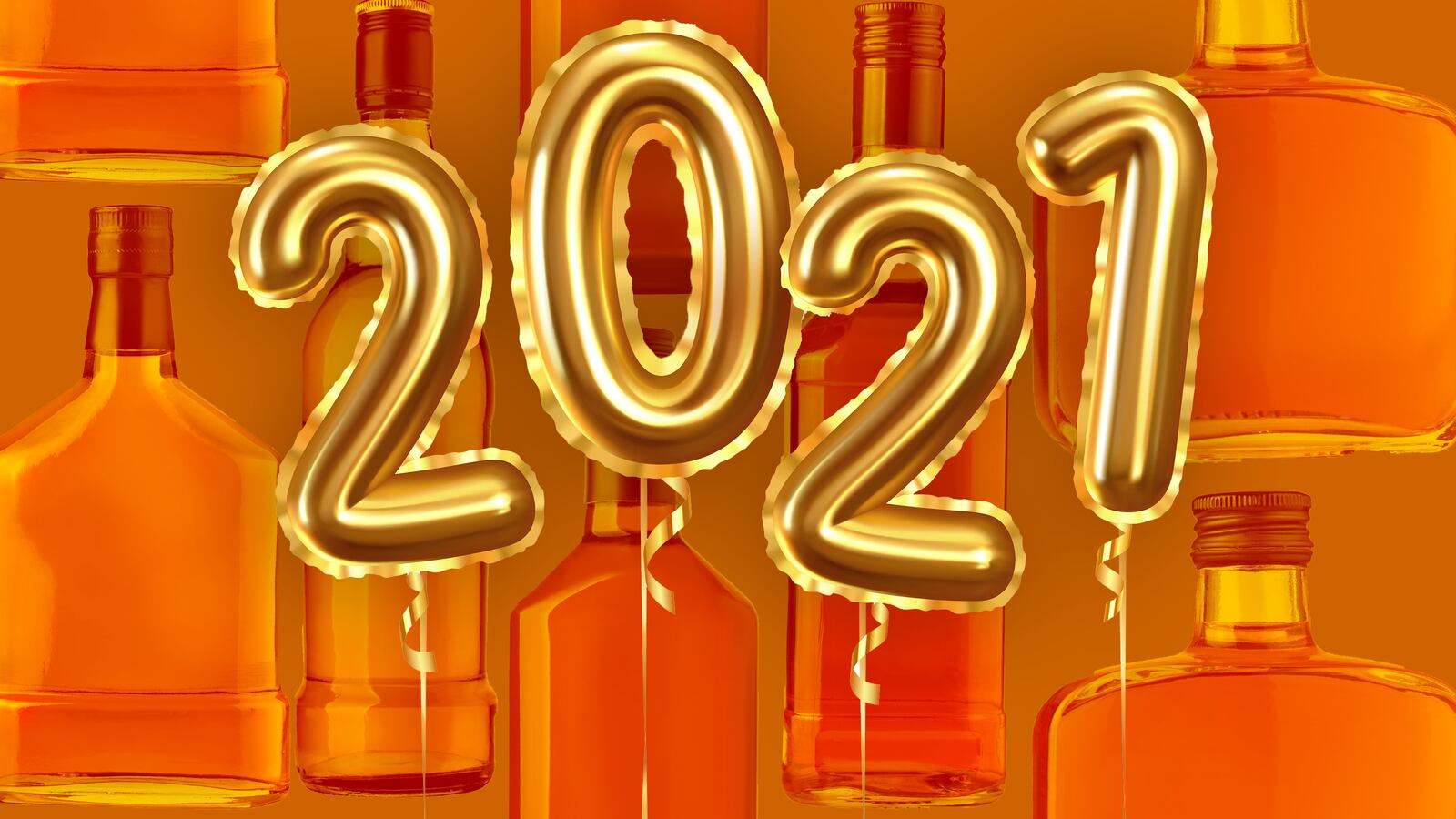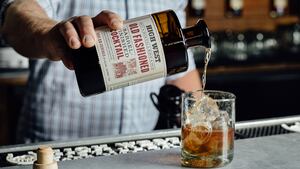Imagine America’s 2,000 craft distillers all gathered around a long and festive table for a joyous holiday banquet. Now cue the foreboding music and reveal the unfortunate main course—2020’s version of a turducken: a tax inside a tariff inside a pandemic.
Unfortunate, yes, in the way the Red Wedding was “unfortunate” in Game of Thrones. How to respond? And will a new year and a new administration offer something more delectable at the table?
So let’s carve this sucker up, starting with the pandemic.
The Covid-19 virus has been brutal for all small businesses, but especially bars. They tend to be compact and strangers sit elbow to elbow. To drink you have to unmask, and when you drink you probably become louder, more voluble and less aware of social distance. Local laws have shut many bars down or sharply restricted capacity; elsewhere, customers fearful of spaces incubating free-range viruses often avoid them.
The sharp decline of the bar market is bad news for anyone selling liquor, but especially for smaller spirits brands. Craft distillers operate in a wholly different world than larger, legacy producers. Top sellers like Jack Daniel’s, Crown Royal, Beefeater, Smirnoff and Bacardi tend to dominate national distribution chains, which rewards them with prime space in stores. Smaller craft distillers, by contrast, have always depended on hand-selling and word-of-mouth, particularly a good word from a trusted bartender to a customer. That’s now gone.
“I mean, so much of it has been based on hand-selling from bartenders—convincing customers, oh, you should try this,” says Becky Harris, who with her husband, Scott, owns Catoctin Creek Distilling Co., in Virginia, and is current president of the American Craft Spirits Association (ACSA).
At the same time, many customers have flocked to “comfort brands”—preferring more familiar and less expensive products. Where pre-pandemic consumers were adventurous when it came to new flavors and products, that changed after the curtain came down and the economy wobbled. One-time customers retreated to their homes with Evan and Jim and Tito and Jack.
Making matters worse, many small distilleries generate the bulk of their revenue through tasting rooms—customers stop by for distillery tours, maybe stay for drinks at the bar (if that state allows it), then pick up some bottles on their way out. Those sales came to a crashing halt as well.
The pandemic hasn’t affected solely the United States, of course. It’s also decimated Europe, which has led to a predictable dampening of exports abroad. And as if that weren’t bad enough, many spirits have been caught in the crosshairs of a long-simmering trade squabble.
America’s trade war with Europe grew out of longstanding spat over tax subsidies for aircraft makers. In June 2018, the European Union slapped a 25 percent tariff on a range of U.S. products, including bourbon and rye. “Since then, we’ve seen a 41 percent decline in exports,” says Chris Swonger, president and CEO of the Distilled Spirits Council of the United States (DISCUS). “That rubs hard.”
The Trump administration responded a year later by imposing a 25 percent tariff on imports of Scotch, European liqueurs and whiskey from Northern Ireland, resulting in a 30 percent decline in exports to America. Then the E.U. recently announced that failing a resolution, the tariffs on American whiskey would double to 50 percent, and additional retaliatory tariffs would be slapped on American rum, brandy and vodka.
The timing couldn’t have been worse for craft distillers. European markets have shown a growing fondness for American craft whiskies—the market for American whiskey grew fivefold between 1997 and mid-2018, and was expected to crest $1 billion this year. Many craft producers were following that demand overseas, expanding export infrastructure. Since the virus, plans have been mostly dialed back or delayed.
And now distillers are facing another terrifying financial chasm, this one domestic, as of the first day of 2021: a massive tax increase unless Congress acts to avert it.
In December 2017, the sweeping $1.5 trillion tax reform bill was passed with provisions that significantly reduced excise taxes on alcohol produced by distillers—from $13.50 to $2.70 per proof gallon. (A proof gallon is one gallon of liquor at 50 percent alcohol by volume.) The average craft distiller makes roughly 7,600 proof gallons of spirit annually, and so saw immediate excise tax savings of about $82,000 per year, which freed up funds for expansion or new hiring.
There were some catches. The reduced rate applied only to the first 100,000 proof gallons made by any distiller, after which alcohol was taxed at the old rate. This didn’t affect many craft distillers, since few approach that threshold. (American craft distillers combined produced roughly 20 million proof gallons last year; by comparison the new Bulleit Bourbon distillery slated to open in Kentucky in 2021 alone can produce 10 million proof gallons annually.)
The second catch in the bill was that it was for just two years—2018 and 2019. In December 2019 the tax break was extended for one additional year—though 2020. But with Congress now divided and further tied in knots over post-election posturing, the prospect of action before the end of the year is dim.
“Each party wants to think they’re going to control the Senate after January 5,” says Tom Mooney, founder and CEO of Westward Whiskey in Oregon and former ACSA president. “And so nobody really wants to concede too much on anything.”
Failing a last-minute extension, on January 1 distillers will face a 400 percent tax increase on every bottle they produce. Distillers say this will surely delay planned expansions and result in further staff furloughs. (According to a fall survey by ACSA, almost 80 percent of craft distillers have previously cut jobs or hours owing to the coronavirus pandemic.)
So, most can agree that this banquet sucks. Is there any room for optimism?
It turns out, yes. Partly because 2020 is concluding, and the general assumption is that 2021 has to be better. (Right?) But also because reasons to be hopeful are rising across the board, on tax, tariff and pandemic alike.
At press time, the federal tax increase appeared unavoidable, although some held out hope for a hail Mary before January 1. But even if the tax quadruples overnight, it may not be permanent. Once the new Congress sorts itself out, backlog legislation will begin to clear.
And the craft beverage act is quite popular—those 2,000 craft distilleries are spread around the country, providing jobs and tax revenue in almost every Congressional district. According to ACSA, about three-quarter of both the House and Senate support it. On December 1, some 39,000 letters were sent to Congress in support of the bill’s renewal, part of a coordinated effort by industry groups. (One Senate staffer referred to the bill as “a partisan behemoth of goodwill,” says Mooney. “We haven’t had time to make that T-shirt yet.”)
The chief question now is whether any tax break extension is permanent or temporary. “Trying to find a vehicle for permanency is a challenge,” says Harris. “There’s all kinds of wheeling and dealing going on, whether they can make it permanent or whether we have to have an extension again.”
Distillers who plan ahead may be able to hold off bottling until the tax cut is renewed, either temporarily or permanently. Distillers pay taxes twice monthly, so those who can briefly delay bottling may avoid being hit on the first of the year. If need be, Mooney says, Westward is prepared to sharply ramp up bottling its whiskey before the end of the year under the old tax rate. This will be done to hopefully provide enough supply until the new tax bill passes, when they can resume bottling under a more favorable rate.
The prospect for tariffs also elicits guarded optimism. While trade disputes with the European Union have been simmering for years, Mooney notes the blunt use of tariffs as a cudgel has been peculiar to the Trump administration. With the Biden administration, “I can see that there is a strong desire to normalize relationships between the United States and Europe,” he says.
Swonger at DISCUS notes that both sides are eager for a deal, since neither European nor American distillers are keen on plummeting exports. “We have hopes with the incoming Biden administration, but that will take time,” he says. Although, he worries about the June deadline, when the E.U. has vowed to impose that second round of tariffs. “Time is not on our side.”
As for the pandemic, vaccines are now approved, and at press time inoculations are beginning around the globe. Optimism is gradually taking root under the belief that Covid-19 may be increasingly ushered to the exits by mid-2021, with the prospect of a return to normalcy. No one is quite sure what normal will look like when it’s back—consumers may remain wary of cramped and confined bars for some time—but 2021 seems certain to be closer in spirit to 2019 than 2020.
Melissa Katrincic says she and her husband planned to open a bar at their Durham Distillery in North Carolina last April—which was supposed to be a year of strong growth following an investment from Constellation Brands. They also had plans to expand to California and Florida, both of which were delayed or deferred.
But they did finally open their bar (at reduced capacity) in October, after a pricey filtration and HVAC upgrade to reduce customer anxiety. The hope is that approaching it slowly and methodically will pay off by building long-term loyalty. “Customers have said this is the first place I’ve been able to relax,” Katrincic says. “I don’t know that we would have been forced to think about that when we were running so fast.”
Mooney also notes that the post-pandemic era may see other changes for the better—changes that were unlikely to arise in the absence of the 2020 cataclysm. Local laws allowing to-go cups are one example, but so too are laws that some states have passed allowing distilleries to ship directly to customers within their own state—which is now allowed in states such as Virginia and Oregon. “That has completely changed how we view opportunity,” Mooney says, noting that direct sales have more than offset the losses from their shuttered tasting room. “It’s been a real lifeline.”
“It’s like we spent all these years building a Lego set following the instructions,” Mooney says, “then somebody came over and knocked all the pieces loose. And we got to rebuild it.”
Let the feasting begin.
UPDATE: The planned 400 percent increase in the liquor excise tax was averted at the last minute when President Donald Trump signed a massive omnibus spending bill and Covid aid package on December 27, five days before the tax increase was to take effect. The Craft Beverage Modernization and Tax Reform Act, part of the omnibus bill, made the reduction permanent and put spirits on the same favorable tax footing as beer and wine. “This passage is a major, monumental moment and the culmination of nearly a decade of craft spirits advocacy efforts,” said ACA president Becky Harris in a statement.








